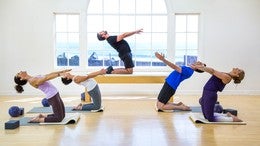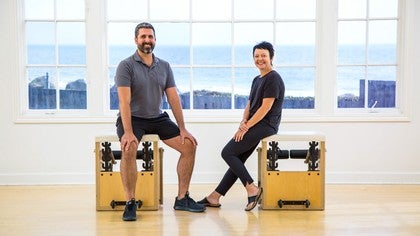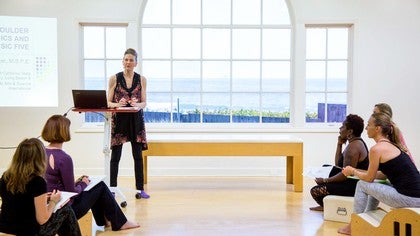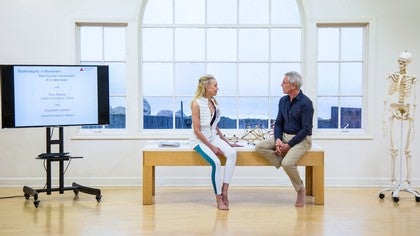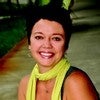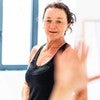Premium Continuing Education workshop
You can view a 2 minute preview. For details, scroll down below the video.
Workshop #3660
The Cervical Powerhouse
Description
Beginning with a concise anatomical overview, participants will quickly progress to hands-on exploration of targeted movements designed to build strength and endurance in this crucial bodily region. Prepare to revolutionize your understanding of neck biomechanics and expand your toolkit for client care.
Objectives
• Master forward and backward bending of the neck (capital flexion and extension) techniques to optimize cervical spine mobility
• Acquire effective strategies for alleviating client neck pain
• Explore functional movements that empower clients to move pain-free
This workshop equips you with practical, immediately applicable knowledge to enhance your practice and profoundly impact your clients' well-being. Don't miss this opportunity to become a cervical spine specialist and take your expertise to new heights.
About This Video
Continuing Education Credits
If you complete this workshop, you will earn:
2.0 credits from Pilates Association Australia (PAA)
The Pilates Association Australia (PAA) is an independent and not-for-profit organization established by the Pilates industry as a regulatory body for control of quality instruction, member support, and integrity within all legitimate approaches to the Pilates Method.
3.0 credits from National Pilates Certification Program (NPCP)
The National Pilates Certification Program is accredited by the National Commission for Certifying Agencies (NCCA)
Workshops: Anatomy and Fascia
Comments
Would you elaborate a bit on how osteoporosis or osteopenia clients need to proceed with neck strengthening exercises? I see a huge need for more strength with my osteoP clients but they have a fear instilled by Drs, PTs and partial information on the subject. If they have been diagnosed with osteoporosis in another part of the skeleton is flexion contraindicated with the cervical spine?
Would love to see an equipment workshop on the subject incorporating your Cervical Powerhouse ideas!
You need to be a subscriber to post a comment.
Please Log In or Create an Account to start your free trial.

